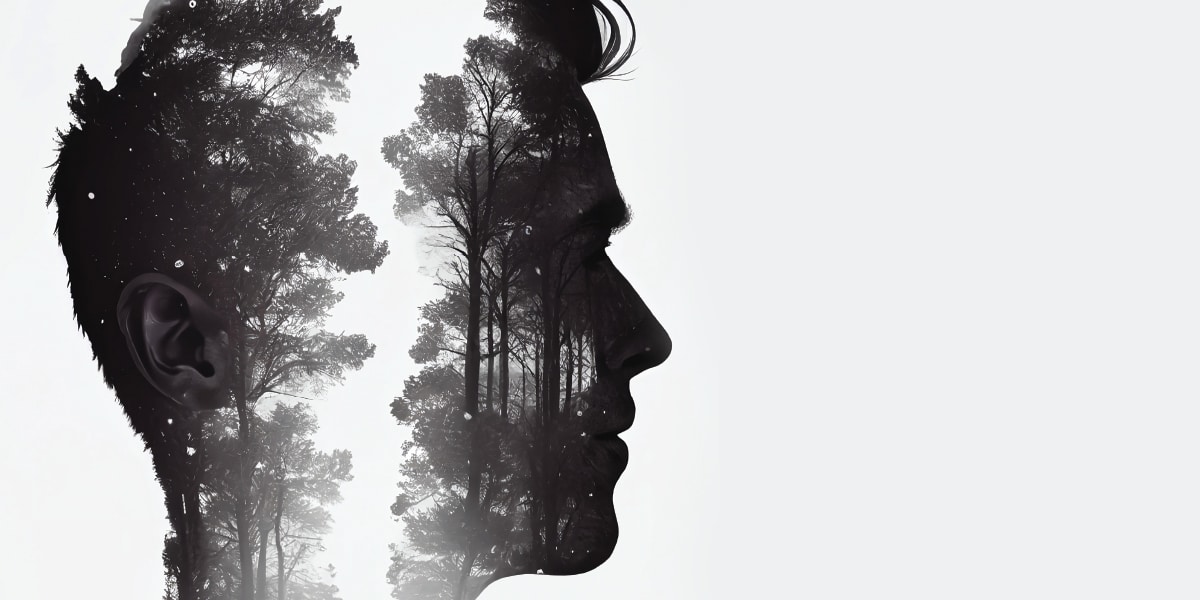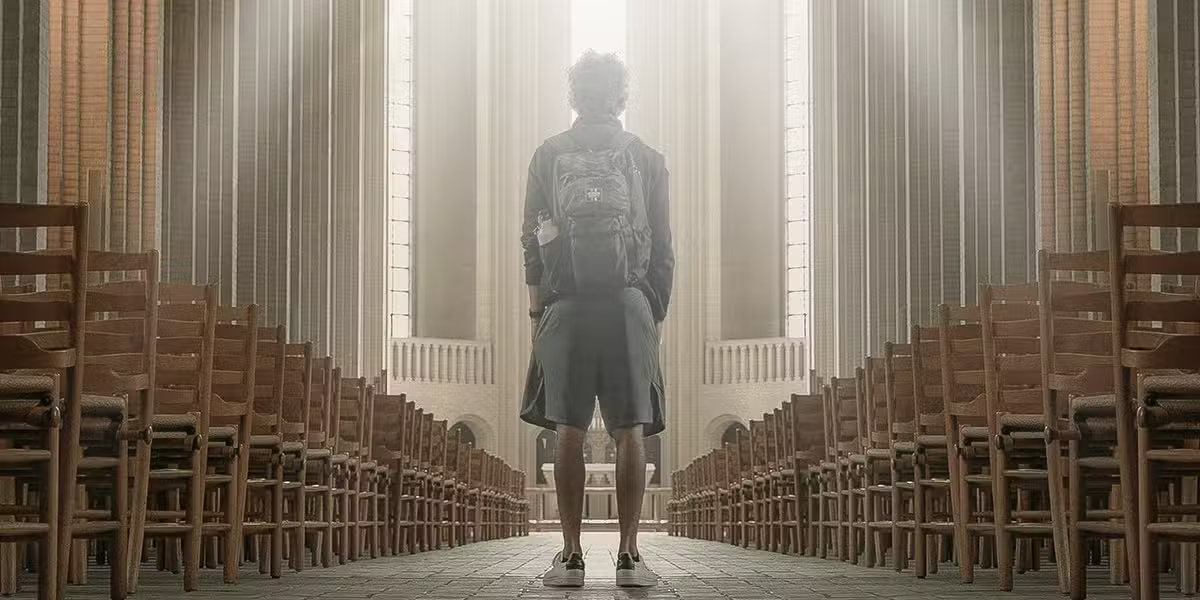Data show teens continue to struggle with mental health. Helping to address the problem is a moral obligation and will require support from all of us.
It’s a crisis that continues to expand and alarm not only teachers like me, but also mental health professionals who track the rising number of young people struggling emotionally and mentally. Tragically, too many teens ultimately decide that it’s easier to end their lives than to endure pain and despair.
The data about teenage depression, anxiety, and soaring suicide rates are so staggering that the United States surgeon general felt compelled in 2021 to issue a 53-page special advisory, “Protecting Youth Mental Health.”
“The challenges today’s generation of young people face are unprecedented and uniquely hard to navigate,” resulting in “devastating” challenges to their mental health, writes Dr. Vivek Murthy.
He notes that, “in 2019, one in three high school students and half of female students reported persistent feelings of sadness or hopelessness, an overall increase of 40 percent from 2009.”
For at least a decade, college professors like me have been on the alert as we interact with students under increased stress. And this is not just the normal jitters that manifest themselves near the end of each semester, when final exams loom.
Our university counseling department regularly shares with us results of a student mental health inventory it uses to identify students who may need early intervention based on their responses to questions about their mental health.
The 2021 Healthy Minds Study identified issues among college students across the United States: depression, anxiety disorder, academic distress, and suicidal ideation. A decade ago, I would have been surprised by the number of students struggling, but they no longer shock me, even as the figures grow grimmer every year. These hurting teens need the support of their families as they access the services of mental health professionals, but often those two sources are not enough.
“When a teen suffers through a mental health crisis, the whole family suffers. It’s stressful for everybody,” says Dr. Courtney Cinko, a child and adolescent psychiatrist at Cincinnati Children’s Hospital Medical Center. “Everyone has to wrap around the child to help him/her get better.”
Having journeyed with one of my daughters, Annie, through years of treatment for mental health issues, I know I could not have navigated these years alone. Fortunately, my daughter’s aunts and uncles and other adult friends were part of our family’s safety net.
To understand how crucial nonparental involvement is to a teen’s progression toward stability and mental balance, it’s helpful to examine causes, treatment, and eventual paths to healing.
Teens, Mental Health, and COVID-19
“We see a mental health emergency crisis nationwide in the wake of COVID-19. It took a toll on children of all ages,” says Cinko, noting that almost two years of social isolation is “a very long time for a child.” Post-pandemic rates of anxiety and depression were higher than before 2019. Even in normal circumstances, adolescence can be a minefield, but there was added pressure during the pandemic, when teens spent much of their time in their bedrooms, in front of laptops or phones.
“The task of being an adolescent is to figure out who you are, where you fit,” Cinko says. “With the rise of social media, there is extra stress to be perfect because of images of peers they see online. Teens don’t realize that many of their social media interactions are not authentic representations of others their age.”
Challenges to teens during COVID-19 were unprecedented, especially when parents or caregivers fretting about finances worked many hours outside the home or worked online and were not available to teens.
Teens “had no one to turn to, no one to talk to them about perceptions of themselves and others that might not be accurate, no one to help them see the world correctly,” Cinko says.
It Takes a Village
During Annie’s first hospitalization, her family “wrapped around” her, including her aunt, Susanne Bookser, who, because of her background in human services, was not squeamish about visiting her niece in the adolescent psychiatric facility. Her attention to Annie continued once she was released.
“I have always liked the energy of younger people, and I really believe they need adults in their lives who are not their parents,” Susanne says. “To gain resilience, they need someone they are already connected to and knows their history, so they can feel safe talking openly.”
To work off stress and get a sense of control, Susanne and Annie immersed themselves in cleaning the house. Regularly, Annie would drive to her aunt’s home to do “a good base cleaning, which she understood the importance of.”
“It was win-win. I was in law school, so had no time to clean,” says Susanne. “I was desperate. I really needed the help, and Annie really needed the money.”
There was another connection, a deeper motivation. Susanne had been suicidal at several points in her college years.
“That sense of aloneness when you are struggling makes you recognize in others the need to be connected,” she reflects.
The “resilience” that Susanne was hoping to deepen in her niece is one of the reasons that Cinko enjoys working with children and teens in her psychiatric practice. “Kids are resilient. They are amazing and can bounce back,” she says.
‘It Put the Power Back in Me’
One experience that played a role in Annie’s eventual bounce back was made possible by her uncle, George Barkley. When he heard that she had been hospitalized, he thought back to the promise he and his brother Gregg had made to their late brother, Annie’s dad.
“Before he went into surgery, Gregg and I took Scott to dinner and promised that if anything happened to him, we would take care of his family,” says George. “When I heard about Annie’s hospitalization, at that instant, I transformed from the ‘fun uncle’ to the ‘supportive uncle,’ watching out for her.”
Even before her hospitalization, the two had a special bond over horses. They would go off as a pair in family gatherings, talking “saddles and bridles and other horse stuff.”
To George, horses are “mystical, responding to their riders intuitively.” To help his niece during her treatment, he leased a horse for her. She had to commit to exercising Frenchee, a 2-year-old thoroughbred who had never been ridden—“mucking stalls, feeding, checking hooves”—all of it, or he would cancel the lease immediately.
As a horse owner and rider, George knew the challenges his niece would face. Riding takes control and concentration. The rider has to lead “emotionally, physically, and mentally,” George explains.
Annie was up to the challenge of rising at 5:30 before school, a wake-up time that held little appeal to her friends “from an unhealthy environment.”
Training and riding an 1,800-pound animal forged a “mutual reliance between Frenchee and her,” observes George. Building that human-animal bond takes work. “Sometimes the rider is doing everything right, but the horse won’t respond. You can’t give up. Resilience is key.”

Resilience is a recurring word one encounters in studies about at-risk adolescents. It is people such as Annie’s aunt and uncle who can “play an important role in promoting resilience” among young people, according to a 2007 article in the academic journal Psychoanalytic Inquiry by a team of doctors under lead investigator Steven M. Southwick.
The study reports that nonparental adults “who serve as mentors can provide reliable support, communicate moral values, teach information and skills, inspire, motivate, enhance interpersonal relatedness, and foster self-esteem.”
As Annie took responsibility for Frenchee, George “saw her grow, saw her sense of pride, saw how special she felt.”
In Annie’s words, “Riding was mentally and physically rewarding. It put the power back in me.”
Identifying People at Risk
My experience navigating the mental health system with my daughter has given me confidence in a role I assume when I see my students struggling. With guidance from our counseling staff about mental health danger signs—repeated absences, late assignments, withdrawal from participation, verbal messages that signal trouble—I feel empowered to check in on students who might be concealing a crisis.
Recently, a student in two of my classes missed deadlines for posting short writing assignments. At the end of one class, I buttonholed him before he could get out the door, asking him what was going on. A grade school friend of his had committed suicide, and his favorite high school teacher had died the weekend before.
When I questioned him about how he was handling this, he responded openly, “A friend tells me that since I have a driver’s license, if I feel unsafe, I can check myself into a hospital.”
I tried not to gasp. Instead, I suggested he schedule a counseling appointment, offering, with no success, to walk over with him to the counseling suite.
A few days later, his answer to my query about what he was doing about his feelings was concerning: “I am trying to never be alone.” After more nagging, as I showed him the link for making an appointment, he scheduled one. In the coming months, I will be keeping an eye on him.
In recent years, I have translated my experiences with mental health professionals and memories of my supportive friends into an openness to listening and asking questions others are afraid to ask.
One of my friends, a 31-year-old woman named Dana, says she realized while she was my student “that I could trust you more than I could a normal adult. I remember having a panic attack one day in your office, and you handled it well. Then what sealed the deal was when you asked me how I was doing, and you just listened. You didn’t panic about what I would share or give me advice I didn’t ask for.”
After she graduated and I was unencumbered by a teacher-student relationship, we developed a peer friendship. Over the years, she has been in and out of treatment, and we have stayed in touch, sometimes through a text or notes and cards. Several years after her graduation, she spent six months at a therapeutic farm residential facility, five hours away from Cincinnati, “in the middle of Amish country and not a quick trip for families and friends.
“There was a lot of downtime, and mail or packages were such an excitement,” she remembers. “The cards you sent were always beautiful and so thoughtful. I taped every single one on my bedroom wall to remind me that someone believed in me. After I was released, I put them in a box so I can reread them.”
At 31, she is not out of the woods, and because she could not work 40 hours a week, had to quit her full-time job as program director at a Cincinnati nonprofit. She volunteers there, doing therapeutic art and tells me why: “It’s an honor to show up for others like you did for me.”
A Moral Obligation to Help
In his 2021 advisory on the crisis of mental health, the surgeon general makes clear that “our obligation to act is not just medical—it’s moral.”
Murthy believes that “in coming out of the COVID-19 pandemic, we have an unprecedented opportunity as a country to rebuild in a way that refocuses our identity and common values, puts people first, and strengthens our connections to others.”
As a Catholic, that sounds a whole lot like the wisdom embedded in the Church’s social teaching, principles I take to heart and try to bring to life in daily actions. One in particular strikes me as relevant when we puzzle out how we can make a difference in the lives of our young people: the principle of life and dignity of the human person.
Many of the young people seeking counseling and psychiatric help feel damaged, broken, and lost. Our reaching out to them can remind them that their lives are valuable. Our investment in them can have big payoffs, even if their healing is a slow process.
Like Dana, my daughter inspires me in her willingness to share her story.
The first counselor I entrusted Annie to was a wise friend. While I was looking for a quick fix, she offered realistic wisdom, “Her problems did not develop overnight, so we can’t fix them overnight.”
In the past 20 years, Annie has shed her loneliness, made deep friendships with healthy people, married a “good guy”; they have two happy and loving children.
After six years of working in corporate sales and marketing, she quit that job to move to a nonprofit, Girls on the Run of Greater Cincinnati, whose mission is to “inspire girls to be joyful, healthy, and confident using a fun, experience-based curriculum which creatively integrates running.” Recently, she was named executive director of that group.
Reading the first email she sent to local coaches and supporters, anyone who knows her well will be reminded of the long journey telegraphed by these words: “The transition to working on behalf of others comes from a passion that grew out of experiences I had growing up. Upon reflecting about my own challenges during childhood, I felt that I had a responsibility to help others as so many had invested in my success and wellness.”
I admire this strong, successful woman who had the grit and resilience to emerge whole from a protracted mental health nightmare.
But she did not do it alone.
How to Support Teens Struggling with Mental Health
By Annie (Barkley) Horn
Support Their Interests. For someone like me, horseback riding was a mindful activity I could do to build confidence in myself, and it served as a release from the stress I was experiencing. I remember my mom driving to and from so many lessons, spending hours at the barn while I did my barn chores, and helping me at weekend horse shows. I also can think of many other loving stand-ins, such as an uncle or family friend.
Spend Time with Them, but Don’t Question Them. Young people may be hesitant to agree to a lunch outing if they believe they will only be questioned the entire time. Don’t come to the table with an agenda; let the conversation unfold organically and be prepared with some neutral conversation starters if warranted.
Build Up Their Circle of Trusted Supporters. It’s hard to see the forest through the trees. A network of supporters will make a young person feel loved and encouraged. I recall a time when a family friend met us at the Cincinnati Museum Center to go through the exhibits with my mom and me. At the time, and especially now, I remember thinking how special it was that this person took the time to meet with us.
Listen with Compassion. If teens choose to talk to you about what is going on, ask if they want you to just listen. Or do they also want advice? Sometimes a kind ear is all that is needed.








